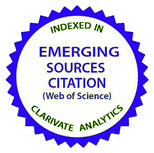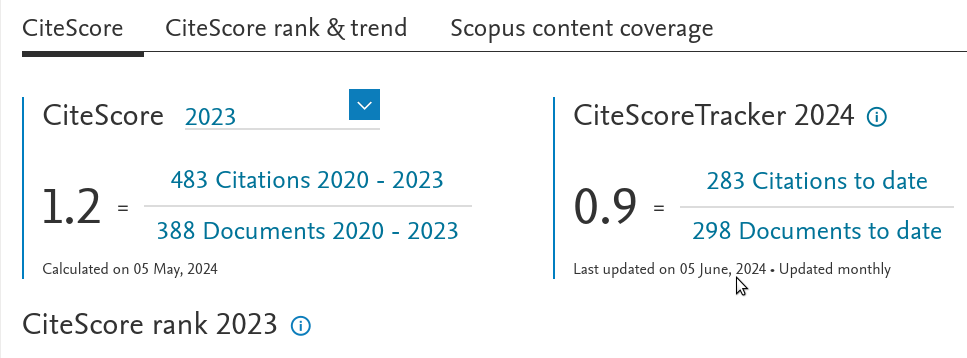Конкурентнi механiзми гiстерезису опору в графеновому каналi
DOI:
https://doi.org/10.15407/ujpe58.05.0472Ключові слова:
графен, механiзми гiстерезису, адсорбати, поверхневi диполiАнотація
Побудовано модель для конкурентних механiзмiв гiстерезису залежностi опору графенового каналу на пiдкладцi рiзної природи вiд напруги на затворi: прямого (зумовленого наявнiстю на поверхнi й iнтерфейсi адсорбатiв з дипольним моментом) i оберненого (зумовленого захопленням носiїв з шару графену на локалiзованi стани на iнтерфейсi графен–пiдкладка). Обговорено можливiсть дискримiнацiї цих каналiв шляхом варiацiї швидкостi змiни напруги на затворi. Вiдзначено добру вiдповiднiсть передбачень теорiї з наявними в лiтературi експериментальними даними.
Посилання
<li> K.S. Novoselov, A.K. Geim, S.V. Morozov et al., Science 306, 666 (2004). <a href="https://doi.org/10.1126/science.1102896">https://doi.org/10.1126/science.1102896</a></li>
<li> A.K. Geim, Science 324, 1530 (2009). <a href="https://doi.org/10.1126/science.1158877">https://doi.org/10.1126/science.1158877</a></li>
<li> M.V. Strikha. Sensor Electr. Microsyst. Technol. 3, N 9, 5 (2012).</li>
<li> Y. Zheng, G.-X. Ni, Z.-T. Toh et al., Appl. Phys. Lett. 94, 163505 (2009). <a href="https://doi.org/10.1063/1.3119215">https://doi.org/10.1063/1.3119215</a></li>
<li> Y. Zheng, G.-X. Ni, Z.-T. Toh et al., Phys. Rev. Lett. 105, 166602 (2010). <a href="https://doi.org/10.1103/PhysRevLett.105.166602">https://doi.org/10.1103/PhysRevLett.105.166602</a></li>
<li> S. Raghavan, I. Stolichnov, N. Setter et al., Appl. Phys. Lett. 100, 023507 (2012). <a href="https://doi.org/10.1063/1.3676055">https://doi.org/10.1063/1.3676055</a></li>
<li> J. Rouquette, J. Haines, V. Bornand et al., Phys. Rev. B 70, 014108 (2004). <a href="https://doi.org/10.1103/PhysRevB.70.014108">https://doi.org/10.1103/PhysRevB.70.014108</a></li>
<li> X. Hong, J. Hoffman, A. Posadas et al., Appl. Phys. Lett. 97, 033114 (2010). <a href="https://doi.org/10.1063/1.3467450">https://doi.org/10.1063/1.3467450</a></li>
<li> Y. Zheng, G.-X. Ni, S. Bae et al., Europhys. Lett. 93, 17002 (2011). <a href="https://doi.org/10.1209/0295-5075/93/17002">https://doi.org/10.1209/0295-5075/93/17002</a></li>
<li> E.B. Song, B. Lian, S.M. Kim et al., Appl. Phys. Lett. 99, 042109 (2011). <a href="https://doi.org/10.1063/1.3619816">https://doi.org/10.1063/1.3619816</a></li>
<li> M.V. Strikha, Ukr. J. Phys. Opt. 12, 162 (2011). <a href="https://doi.org/10.3116/16091833/12/4/161/2011">https://doi.org/10.3116/16091833/12/4/161/2011</a></li>
<li> M.V. Strikha, JETP Lett. 95, 198 (2012). <a href="https://doi.org/10.1134/S002136401204008X">https://doi.org/10.1134/S002136401204008X</a></li>
<li> A.I. Kurchak and M.V. Strikha, JETP 116, 112 (2013). <a href="https://doi.org/10.1134/S106377611301007X">https://doi.org/10.1134/S106377611301007X</a></li>
<li> N. Lafkioti, B. Krauss, T. Lohmann et al., Nano Lett. 10, 1149 (2010). <a href="https://doi.org/10.1021/nl903162a">https://doi.org/10.1021/nl903162a</a></li>
<li> H.Wang, Y.Wu, C. Cong et al., ACS Nano 4, 7221 (2010). <a href="https://doi.org/10.1021/nn101950n">https://doi.org/10.1021/nn101950n</a></li>
<li> S.S. Sabri, P.L. Levesque, C.M. Aguirre et al., Appl. Phys. Lett. 95, 242104 (2009). <a href="https://doi.org/10.1063/1.3273396">https://doi.org/10.1063/1.3273396</a></li>
<li> P.L. Levesque, S.S. Sabri, C.M. Aguirre et al., Nano Lett. 11, 132 (2011). <a href="https://doi.org/10.1021/nl103015w">https://doi.org/10.1021/nl103015w</a></li>
<li> A. Veligura, in Zernike Institute PhD thesis series 2012-24 (2012), p. 53.</li>
<li> S. Das Sarma, Sh. Adam, E.H. Hwang, and E. Rossi, Rev. Mod. Phys. 83, 407 (2011). <a href="https://doi.org/10.1103/RevModPhys.83.407">https://doi.org/10.1103/RevModPhys.83.407</a></li>
<li> Ju. Li, X. Xiao, F. Yang, M.W. Verbrugge, and Y.-T. Cheng, J. Phys. Chem. C 116, 1472 (2012). <a href="https://doi.org/10.1021/jp207919q">https://doi.org/10.1021/jp207919q</a></li>
<li> S.V. Kalinin and A.N. Morozovska, submitted to J. Electroceram.</li>
<li> S.H. Glarum, J. Chem. Phys. 33, 1371 (1960). <a href="https://doi.org/10.1063/1.1731414">https://doi.org/10.1063/1.1731414</a></li>
<li> A. Veligura, P.J. Zomer, I.J. Vera-Marun et al., J. Appl. Phys. 110, 113708 (2011). <a href="https://doi.org/10.1063/1.3665196">https://doi.org/10.1063/1.3665196</a></li>
</ol>
Downloads
Опубліковано
Як цитувати
Номер
Розділ
Ліцензія
Ліцензійний Договір
на використання Твору
м. Київ, Україна
Відповідальний автор та співавтори (надалі іменовані як Автор(и)) статті, яку він (вони) подають до Українського фізичного журналу, (надалі іменована як Твір) з одного боку та Інститут теоретичної фізики імені М.М. Боголюбова НАН України в особі директора (надалі – Видавець) з іншого боку уклали даний Договір про таке:
1. Предмет договору.
Автор(и) надає(ють) Видавцю безоплатно невиключні права на використання Твору (наукового, технічного або іншого характеру) на умовах, визначених цим Договором.
2. Способи використання Твору.
2.1. Автор(и) надає(ють) Видавцю право на використання Твору таким чином:
2.1.1. Використовувати Твір шляхом його видання в Українському фізичному журналі (далі – Видання) мовою оригіналу та в перекладі на англійську (погоджений Автором(ами) і Видавцем примірник Твору, прийнятого до друку, є невід’ємною частиною Ліцензійного договору).
2.1.2. Переробляти, адаптувати або іншим чином змінювати Твір за погодженням з Автором(ами).
2.1.3. Перекладати Твір у випадку, коли Твір викладений іншою мовою, ніж мова, якою передбачена публікація у Виданні.
2.2. Якщо Автор(и) виявить(лять) бажання використовувати Твір в інший спосіб, як то публікувати перекладену версію Твору (окрім випадку, зазначеного в п. 2.1.3 цього Договору); розміщувати повністю або частково в мережі Інтернет; публікувати Твір в інших, у тому числі іноземних, виданнях; включати Твір як складову частину інших збірників, антологій, енциклопедій тощо, то Автор(и) мають отримати на це письмовий дозвіл від Видавця.
3. Територія використання.
Автор(и) надає(ють) Видавцю право на використання Твору способами, зазначеними у п.п. 2.1.1–2.1.3 цього Договору, на території України, а також право на розповсюдження Твору як невід’ємної складової частини Видання на території України та інших країн шляхом передплати, продажу та безоплатної передачі третій стороні.
4. Строк, на який надаються права.
4.1. Договір є чинним з дати підписання та діє протягом усього часу функціонування Видання.
5. Застереження.
5.1. Автор(и) заявляє(ють), що:
– він/вона є автором (співавтором) Твору;
– авторські права на даний Твір не передані іншій стороні;
– даний Твір не був раніше опублікований і не буде опублікований у будь-якому іншому виданні до публікації його Видавцем (див. також п. 2.2);
– Автор(и) не порушив(ли) права інтелектуальної власності інших осіб. Якщо у Творі наведені матеріали інших осіб за виключенням випадків цитування в обсязі, виправданому науковим, інформаційним або критичним характером Твору, використання таких матеріалів здійснене Автором(ами) з дотриманням норм міжнародного законодавства і законодавства України.
6. Реквізити і підписи сторін.
Видавець: Інститут теоретичної фізики імені М.М. Боголюбова НАН України.
Адреса: м. Київ, вул. Метрологічна 14-б.
Автор: Електронний підпис від імені та за погодження всіх співавторів.

















